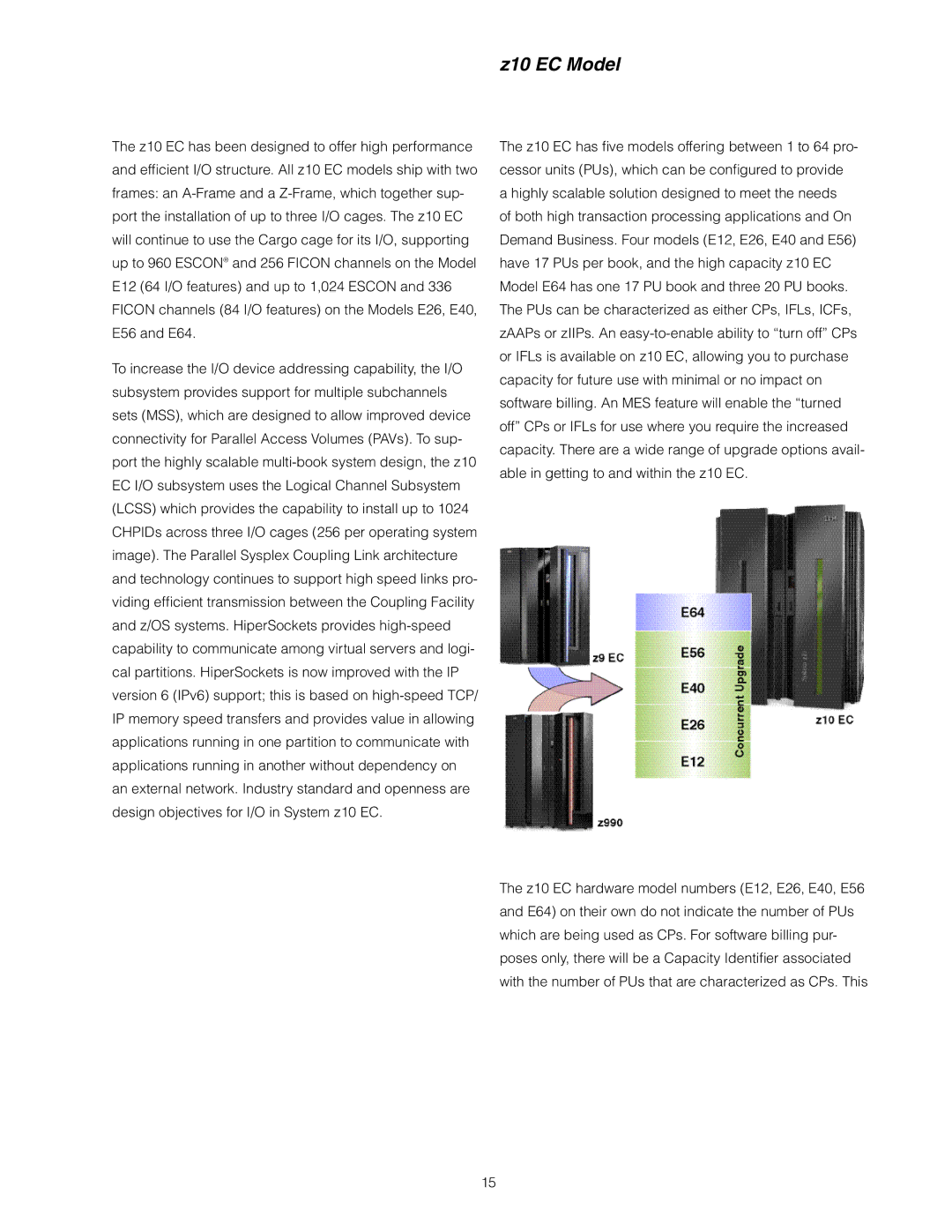
z10 EC Model
The z10 EC has been designed to offer high performance and effi cient I/O structure. All z10 EC models ship with two frames: an
To increase the I/O device addressing capability, the I/O subsystem provides support for multiple subchannels sets (MSS), which are designed to allow improved device connectivity for Parallel Access Volumes (PAVs). To sup- port the highly scalable
The z10 EC has fi ve models offering between 1 to 64 pro- cessor units (PUs), which can be confi gured to provide a highly scalable solution designed to meet the needs of both high transaction processing applications and On Demand Business. Four models (E12, E26, E40 and E56) have 17 PUs per book, and the high capacity z10 EC Model E64 has one 17 PU book and three 20 PU books. The PUs can be characterized as either CPs, IFLs, ICFs, zAAPs or zIIPs. An
The z10 EC hardware model numbers (E12, E26, E40, E56 and E64) on their own do not indicate the number of PUs which are being used as CPs. For software billing pur- poses only, there will be a Capacity Identifi er associated with the number of PUs that are characterized as CPs. This
15
